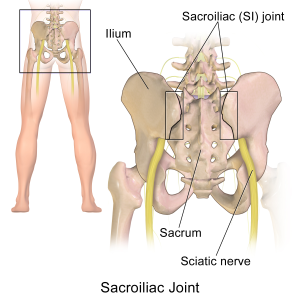 Treatments for sacroiliac joint dysfunction (SI joint pain) typically focus on alleviating pain and restoring normal motion in the joint. Most cases of SI joint pain are effectively managed using non-surgical treatments.
Treatments for sacroiliac joint dysfunction (SI joint pain) typically focus on alleviating pain and restoring normal motion in the joint. Most cases of SI joint pain are effectively managed using non-surgical treatments.
Initial treatments for sacroiliac joint pain typically include:
- Brief rest period. A rest period of 1 to 2 days may be advised. Resting for longer than a couple days is not recommended, as doing so may worsen stiffness and cause increased pain and generalized deconditioning.
- Applying ice or heat. Ice applied to the low back and pelvis can reduce inflammation and alleviate pain and discomfort. Heat applied around the joint may help relieve pain by reducing muscle tension or spasms.
- Pain medication. Over-the-counter pain relievers (such as acetaminophen) and anti-inflammatory medications (NSAIDs, such as ibuprofen or naproxen) may be recommended for mild to moderate pain relief. Prescription medications such as muscle relaxants or narcotic painkillers may be used during episodes of severe, acute pain. These medications must be used with caution, as they are highly addictive and can cause severe side effects.
- Manual manipulation. Manual manipulation provided by a chiropractor, osteopathic doctor, or other qualified health professionals can be highly effective if sacroiliac joint pain is caused by too little motion. This therapy consists of physical adjustments applied to the hips SI joint, and lower back region with the goal of reducing joint fixation and muscle tension, and restoring normal range of motion.
- Supports or braces. When the SI joint is too loose (hypermobile), a pelvic brace can be wrapped around the waist and pulled snugly to stabilize the area. A pelvic brace is about the size of a wide belt and can be helpful when the joint is inflamed and painful.
- Sacroiliac joint injections. A local anesthetic (such as lidocaine or bupivacaine) is injected with an anti-inflammatory medication (such as a corticosteroid) to reduce inflammation and help alleviate pain. The pain relief from a joint injection can help minimize pain when starting a physical therapy program and returning to normal activity levels.
There is no single approach to managing SI joint pain that will work for everyone. A combination of nonsurgical treatments is usually necessary for effective pain relief. Additionally, a period of trial-and-error may be needed to find treatments that address specific symptoms.
Continue reading the full article from Steven G. Yeomans DC on Spine Health here.

